Jesus cross tattoos embody a unique blend of artistic expression and deep-rooted faith, merging vibrant body art with a rich spiritual legacy that resonates with many. You might find yourself drawn to these designs not just for their striking aesthetics, but because they represent a powerful symbol of redemption, hope, and personal transformation. Throughout history, the cross has held profound meanings in Christianity, serving as a beacon of suffering, love, and resilience, which are eloquently captured in an inked rendition on the skin. Every line and curve in a Jesus cross tattoo tells a story of faith and endurance, inviting you to reflect on your personal journey in a way that resonates with both tradition and contemporary style. It’s fascinating how these tattoos serve as daily affirmations of belief, even when the world around you seems overwhelming. The allure lies in the harmonious marriage of spirituality and art, making each tattoo a piece of living testimony expressed in an ever-changing medium that stays with you for life.
Historical Roots: The Evolution of Religious Symbols in Body Art
The evolution of religious symbols in body art offers an intriguing glimpse into how tradition and modernity intertwine over centuries. Jesus cross tattoos have a storied past, evolving from early religious depictions and iconography to contemporary renditions that honor a divine narrative while embracing personal interpretation. People have long used ink on skin as a means of expressing their faith, a tradition that spans different cultures and communities. As tattooing became more accessible, these religious symbols transformed into something more intimate; they now serve as personal icons that convey stories of struggle, victory, and unwavering spiritual commitment. When you opt for a Jesus cross tattoo, you’re not just choosing a design – you’re connecting with a rich heritage full of sacrifice, compassion, and the transformative power of belief. The journey from ancient symbols etched in manuscripts to modern, customizable body art reflects how traditions are continuously reinvented to fit the ever-changing cultural tapestry, offering a seamless connection between past and present.
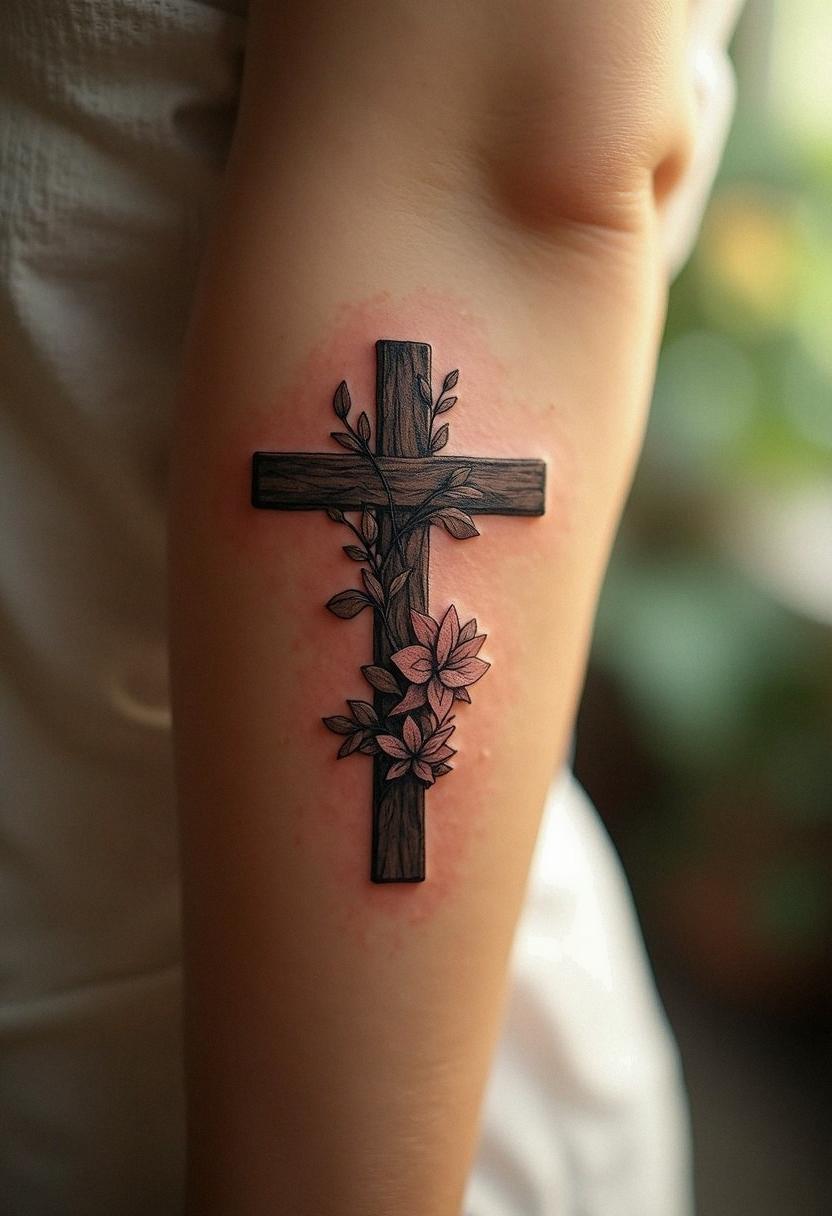
Symbolism Unveiled: Meaning, Faith, and Personal Significance Behind the Jesus Cross
Delving into the meaning behind a Jesus cross tattoo reveals layers of symbolism that transcend the visible design. This emblem stands as a profound narrator of faith, representing the ultimate sacrifice, redemption, and hope that many find deeply inspiring. Each Jesus cross tattoo acts as a spiritual reminder that life is a journey filled with trials and triumphs, all underscored by a promise of eternal love and grace. People often choose to mark their bodies with this enduring symbol as a testament to overcoming personal battles or to signify rebirth and transformation in their lives. Whether it’s a nod to family heritage, a personal milestone, or even a poetic tribute to inner strength, the Jesus cross tattoo offers an intimate glimpse into one’s soul. You might be surprised at how this deeply personal icon can spark conversations about belief, life changes, and the vital importance of hope. With every glance, you’re encouraged to honor your story and recognize the nuances of your spiritual journey, making this ink a lifelong companion in expressing who you truly are.
Design Inspirations: Style Trends, Artistic Variations, and Customizable Elements
Designing a Jesus cross tattoo opens up a world of artistic possibilities, where traditional symbols beautifully merge with contemporary flair to produce a design that is entirely personal. Over the years, an array of style trends have emerged, ranging from minimalist outlines to intricately detailed masterpieces that incorporate shading, color, and ornamental elements. You might explore a realistic portrayal of the cross, or alternatively, a more abstract, almost ethereal interpretation that resonates with your inner spirit. The artistic variations are impressive; some designs integrate additional religious symbols or text, while others focus on the purity of the cross itself, allowing the viewer to fill in the emotional depth based solely on the lines and curves. This flexibility means you’re not confined to a one-size-fits-all approach – you have the power to customize your tattoo to narrate your own faith story, personal victories, or even moments of profound reflection. Every brushstroke contributes to an evolving narrative, where tradition meets the artist’s creative vision, resulting in a testament that is as unique as it is timeless. It’s a reminder that art is personal, compelling you to embrace your own style and spiritual ethos.
Placement and Size: Choosing the Perfect Spot and Scale for Your Jesus Cross Tattoo
Determining the best placement and scale for your Jesus cross tattoo is as thoughtfully crucial as selecting the design itself. Whether you view the tattoo as a daily reminder of your spiritual journey or as a bold statement of faith, considering where it will live on your body is paramount. Some individuals opt for subtle placements like the wrist or behind the ear, symbolizing personal introspection, whereas others might choose a more prominent location, like the chest or the back, to showcase their dedication openly. The size of the tattoo plays a vital role as well – a larger tattoo can capture intricate details and invites closer interaction from those who notice it, while a smaller design can be an intimate, private signal of your faith. You might evaluate how the tattoo flows with your natural contours, ensuring that it complements your body’s lines and movements. The decision, therefore, becomes an artful exploration of both physical aesthetics and symbolic significance, balancing visibility with personal meaning. It’s important to envision how each placement empowers you daily, ensuring that your tattoo remains not only a piece of art but also a cherished emblem of your spiritual and personal evolution.
Finding the Right Artist: Tips for Selecting Professionals Specializing in Religious Tattoos
Choosing an artist who truly understands the delicate balance between spirituality and art in a Jesus cross tattoo is super important. For many, the tattoo artist is more than just a technician; they’re the storyteller who translates your faith into enduring ink on your skin. The best artists in this realm have a portfolio that not only showcases intricate designs and flawless execution but also a deep appreciation for religious symbolism and its nuanced meanings. When you seek out a professional specializing in religious tattoos, it’s essential to view their previous work carefully and even schedule consultations to gauge if they capture the respectful tone and artistic finesse needed. You might ask for samples of custom work, reading online reviews, and even reaching out to past clients. Essentially, you want someone who can balance technical precision with emotional depth, providing a safe space to express part of your identity. After all, a Jesus cross tattoo isn’t just another design – it’s a visible testament to your beliefs, carved into your skin with every thoughtful detail. Trusting the right artist with this responsibility can transform the process into a rewarding journey of self-expression and creativity.
Aftercare Essentials: Preserving and Caring for Your Jesus Cross Tattoo
Caring for your Jesus cross tattoo is a commitment that starts the moment you step out of the studio, as proper aftercare can significantly influence both its longevity and the vibrancy of its design. Once you have embraced your new ink as a symbol of your journey, daily maintenance becomes essential in preserving its meaning and aesthetics. You might find that a detailed aftercare routine, which includes gentle cleaning with fragrance-free soap and regular moisturizing, is your best defense against fading and infection. It’s not just about protecting the ink; it’s about ensuring that the spiritual and personal significance of your tattoo remains crystal clear over time. From steering clear of direct sunlight and swimming pools to applying specialized ointments recommended by your tattoo artist, every step counts in the healing process. You may also benefit from scheduling follow-up sessions if needed, ensuring that the design stays vibrant and true to its original form. A well-cared-for tattoo isn’t merely an adornment – it’s a living piece of art that continues to tell your story with clarity and passion as the years go by.
Personal Stories: Experiences and Testimonies Behind the Faith-Inspired Ink
Every Jesus cross tattoo has a story as unique as the person wearing it, weaving together moments of deep introspection, spiritual awakenings, and personal triumphs. For many, the process of getting inked becomes a deeply cathartic experience, a way to inscribe pivotal moments of their life on their skin. You might hear accounts of individuals who saw this tattoo as a symbol of overcoming adversity, while others choose it to honor a loved one or commemorate a life-changing epiphany. Engaging with these narratives enables you to see similarities in their journeys, illuminating the shared symbolism of resilience and faith. These personal testimonies often spark conversations and provide comfort, reminding you that you’re not alone in your quest for spiritual authenticity. When you read these stories, you might notice how the tattoo becomes a bridge between personal history and universal spiritual motifs, ensuring that every line on the skin carries both aesthetic beauty and an emotional legacy. It’s a powerful reminder that your tattoo is much more than just art – it’s a living narrative of your past, present, and the ever-evolving future.
Cultural Impact: How Jesus Cross Tattoos Influence Modern Tattoo Culture
In today’s vibrant tattoo scene, Jesus cross tattoos stand out as a fascinating intersection of art, spirituality, and cultural phenomenon. They have influenced modern tattoo culture by bridging the gap between traditional religious imagery and contemporary artistic expression, resonating with a diverse audience looking for meaning and identity beyond the surface. As society grows more accepting of diverse beliefs and personal narratives, these tattoos have become symbols of both reverence and rebellion, conveying stories that challenge convention while honoring age-old traditions. You might notice that Jesus cross tattoos are no longer confined to a singular style – they have evolved to incorporate bold, abstract elements, intricate shading, and even color combinations that mirror personal experiences. This dynamic evolution has allowed them to transcend simple categorization, morphing into a cultural emblem that simultaneously honors heritage and celebrates individuality. In modern cultures, where self-expression is paramount, this interplay of faith and art continues to inspire trends that embrace diversity, personal resilience, and the universal quest for meaning. It’s a testament to the transformative power of art and symbolism in a world that’s constantly evolving.
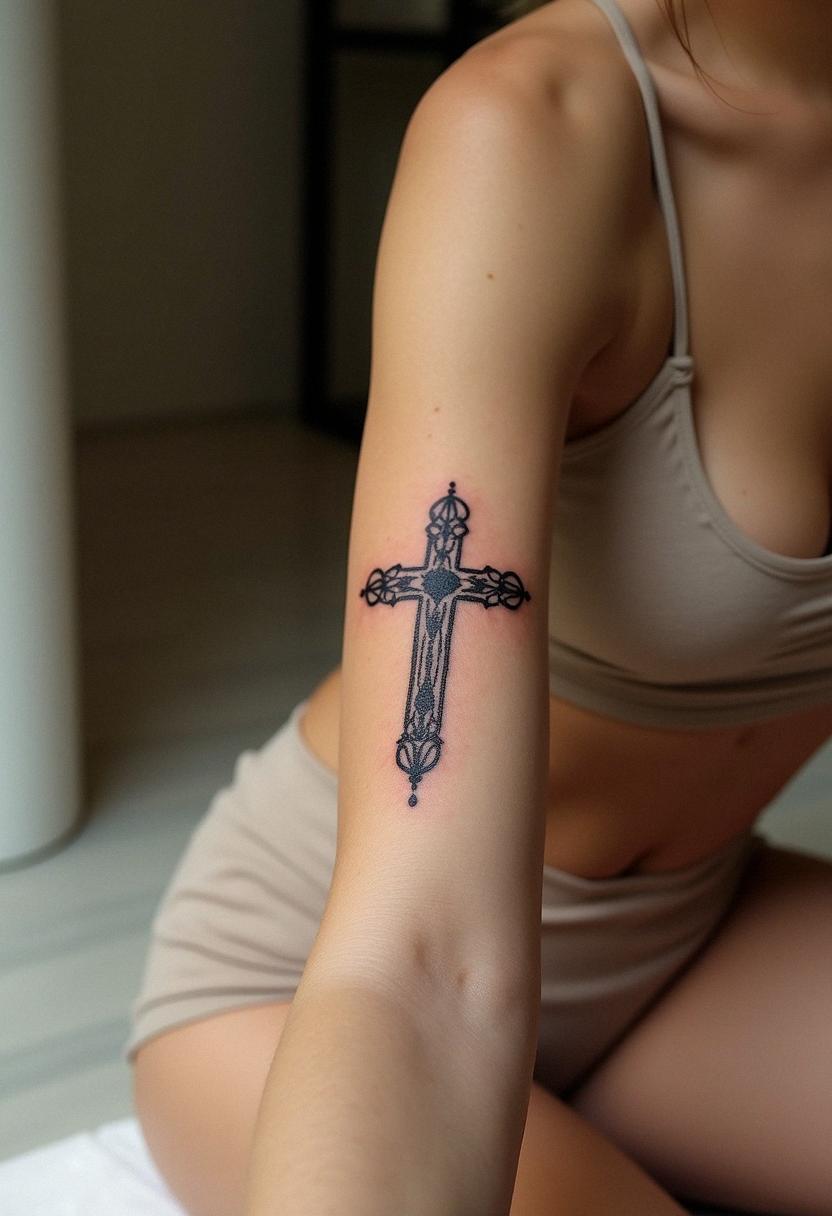
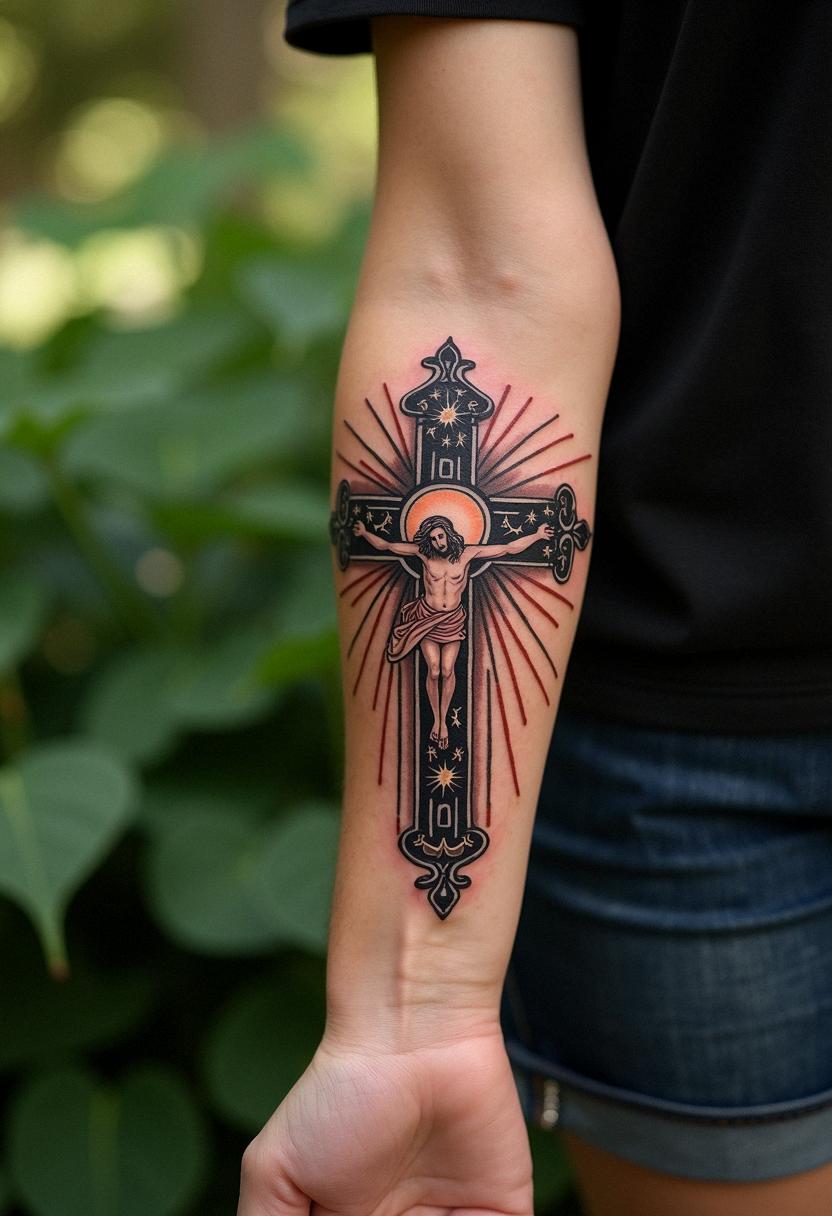
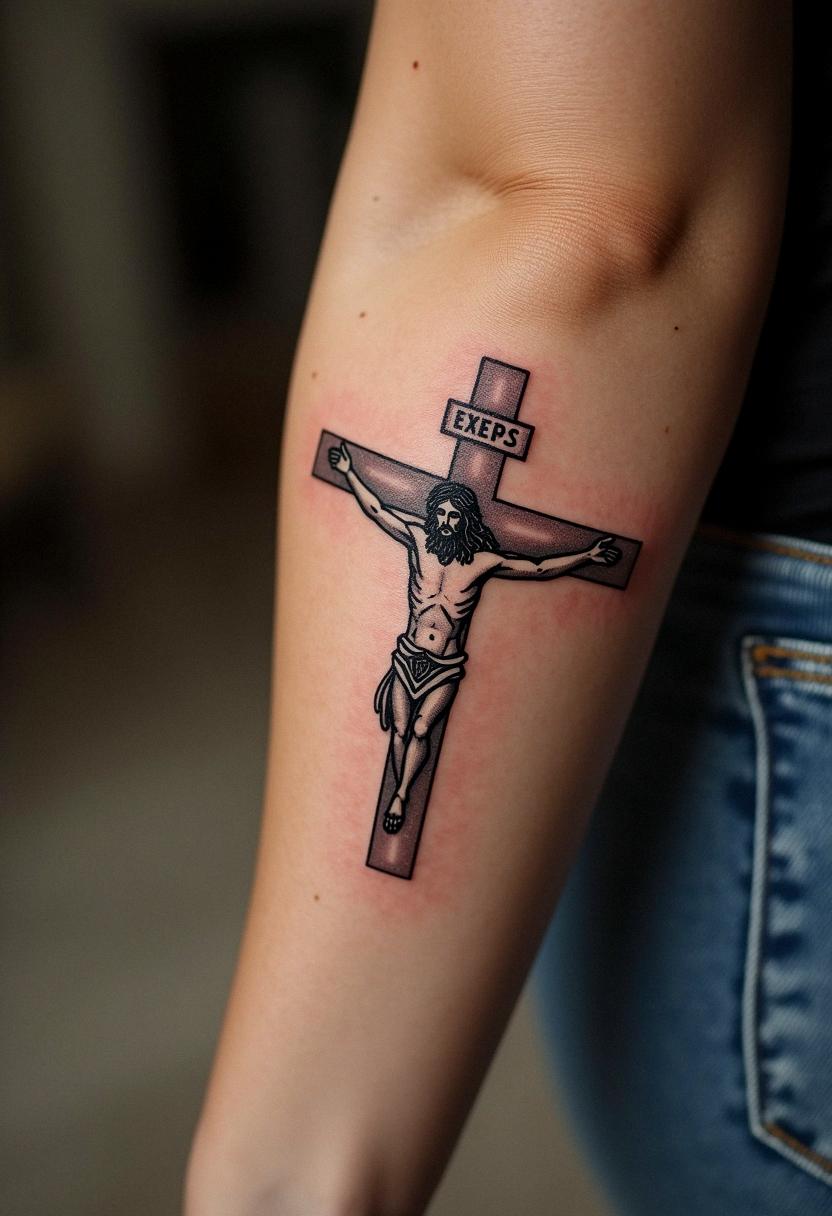
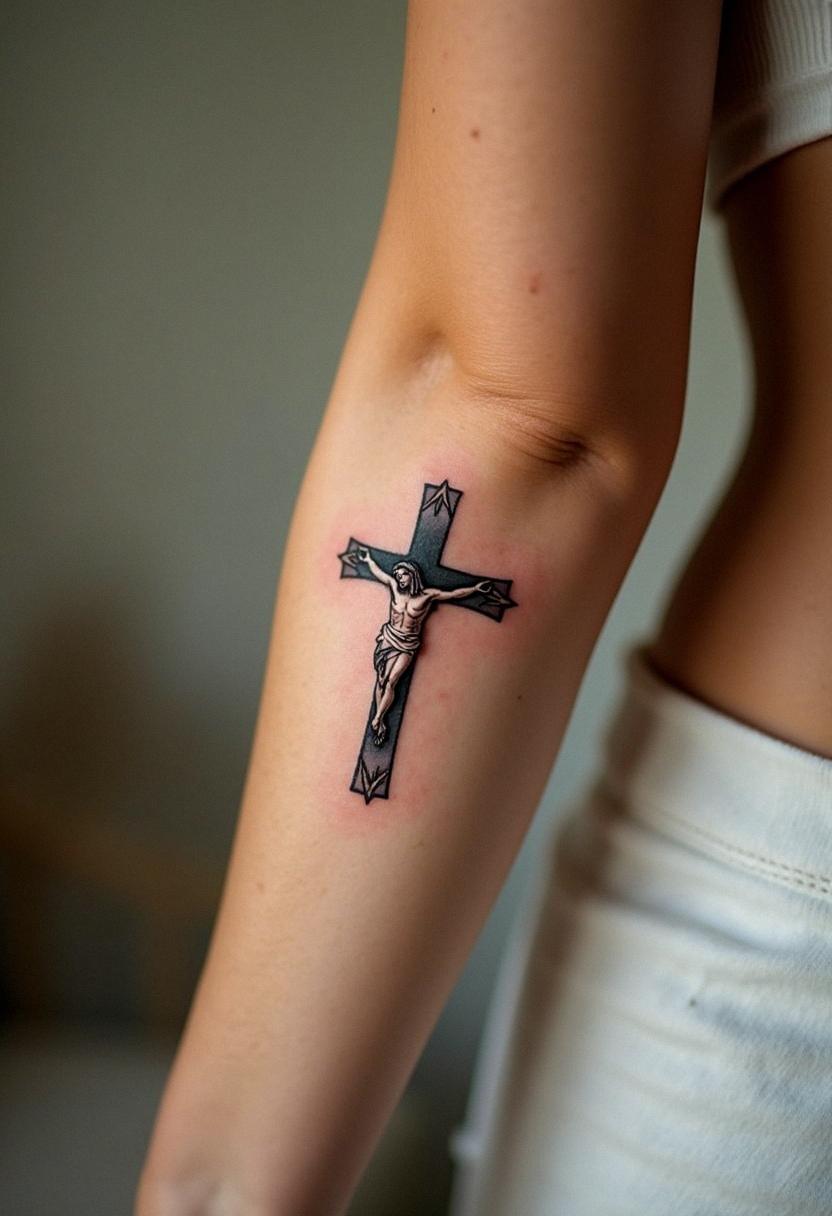
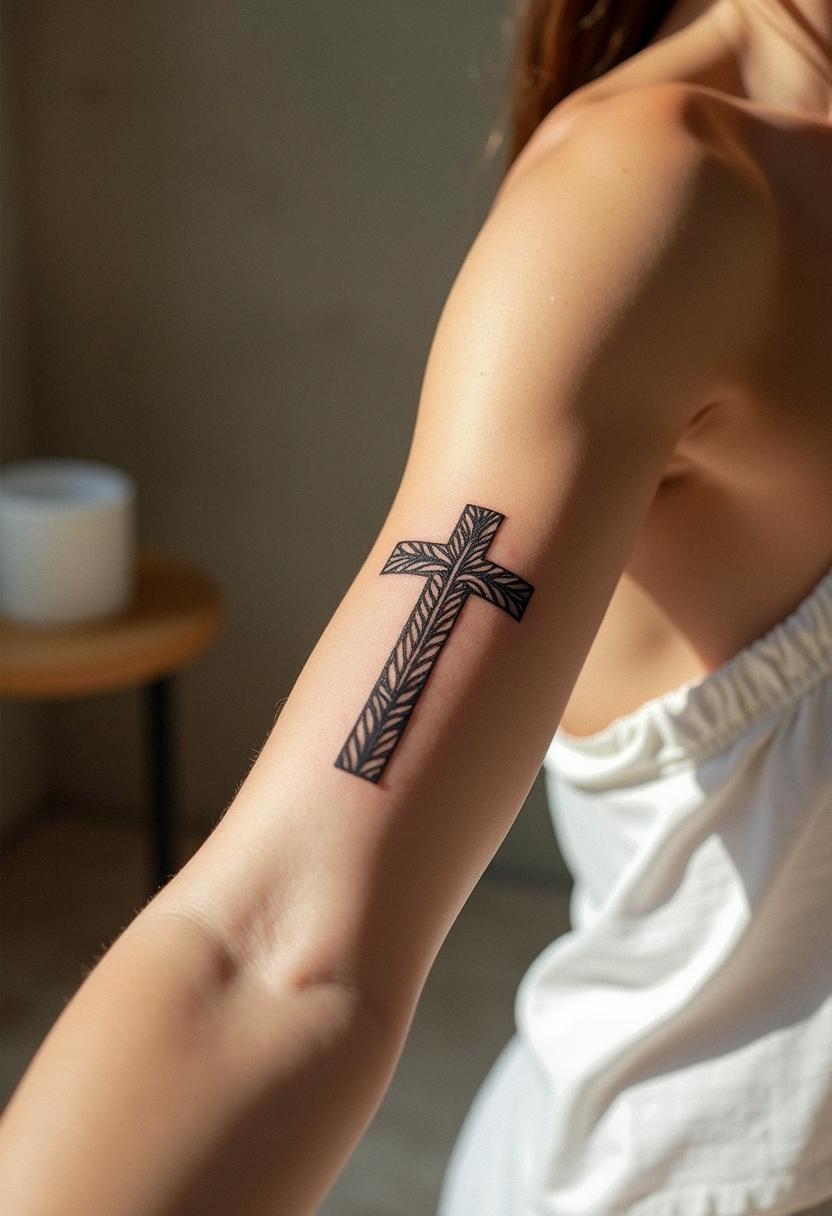
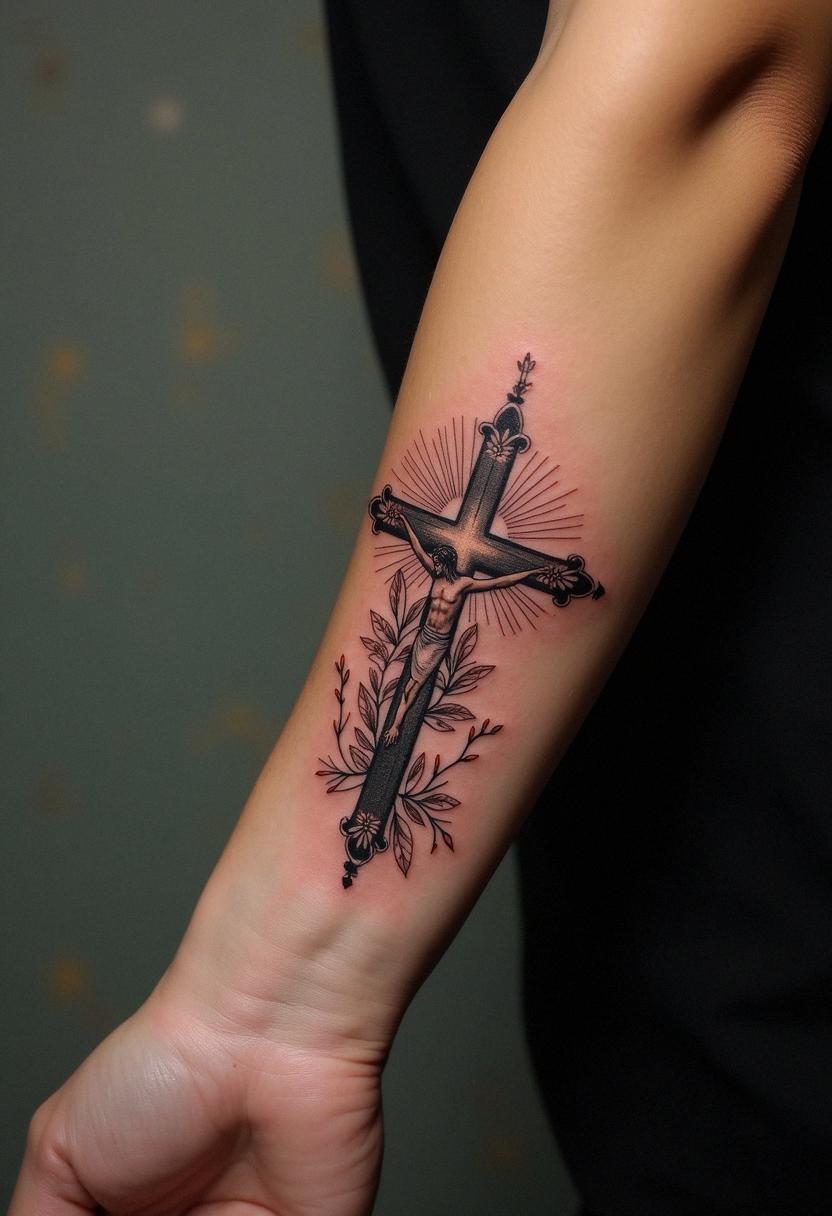
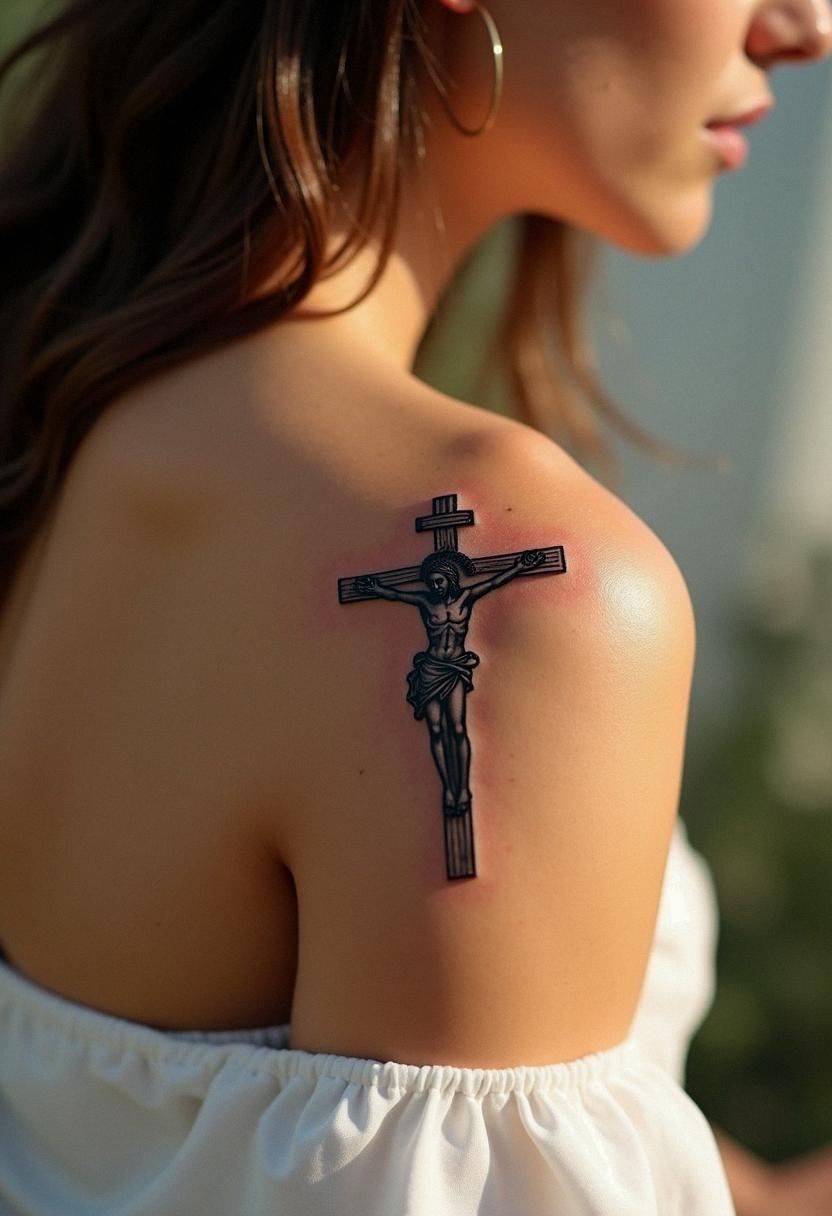

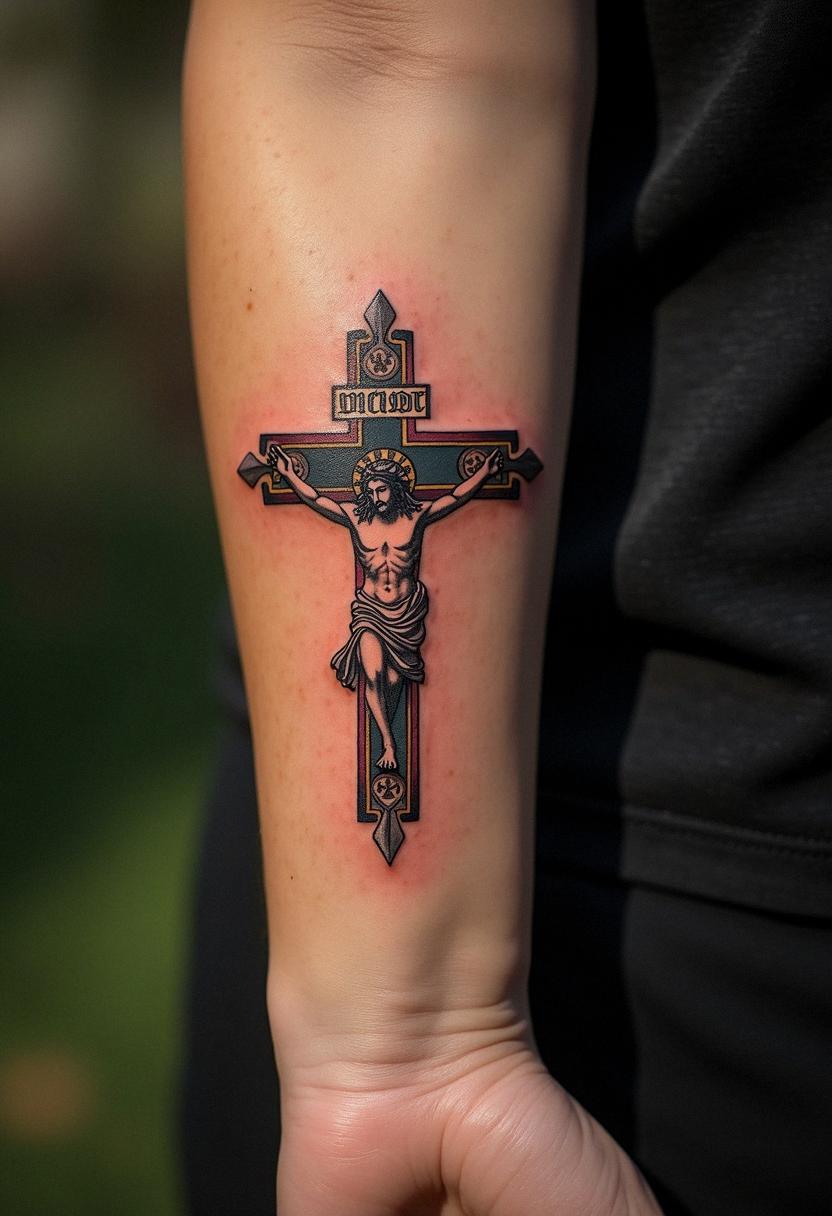
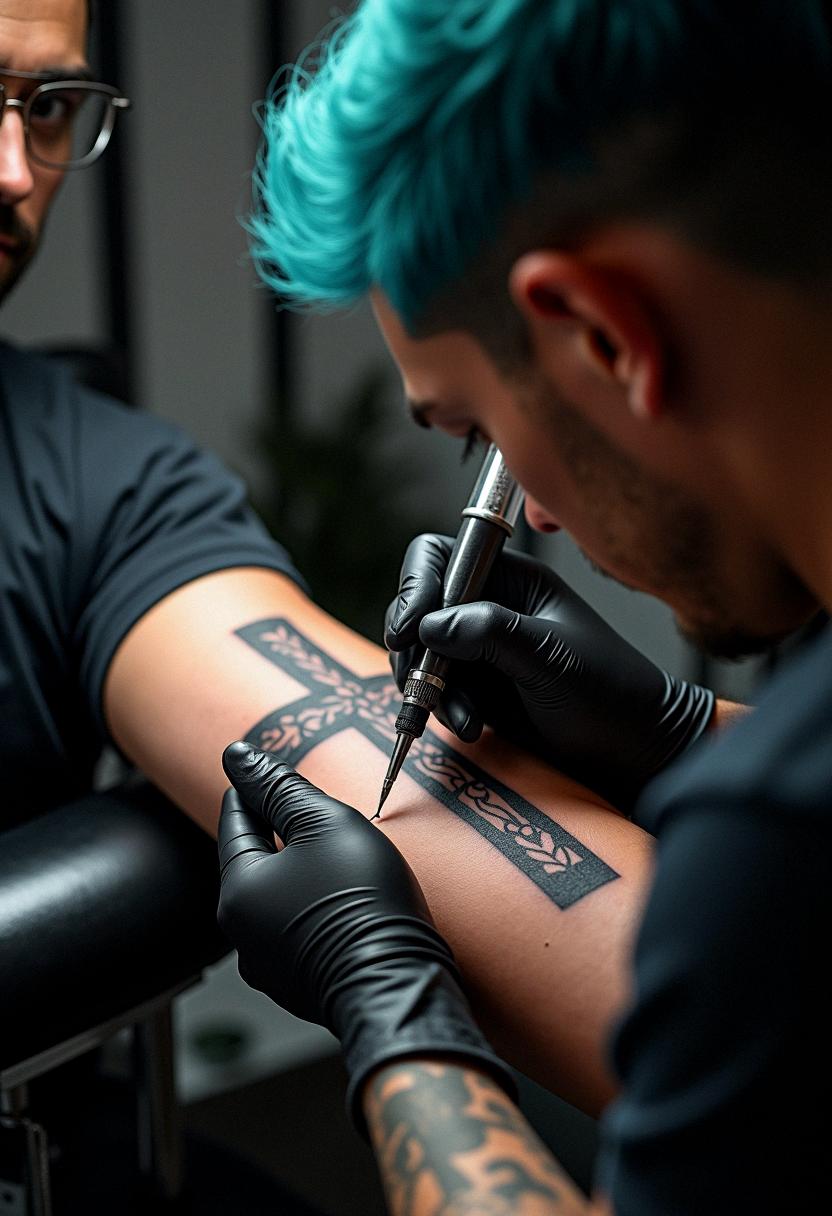
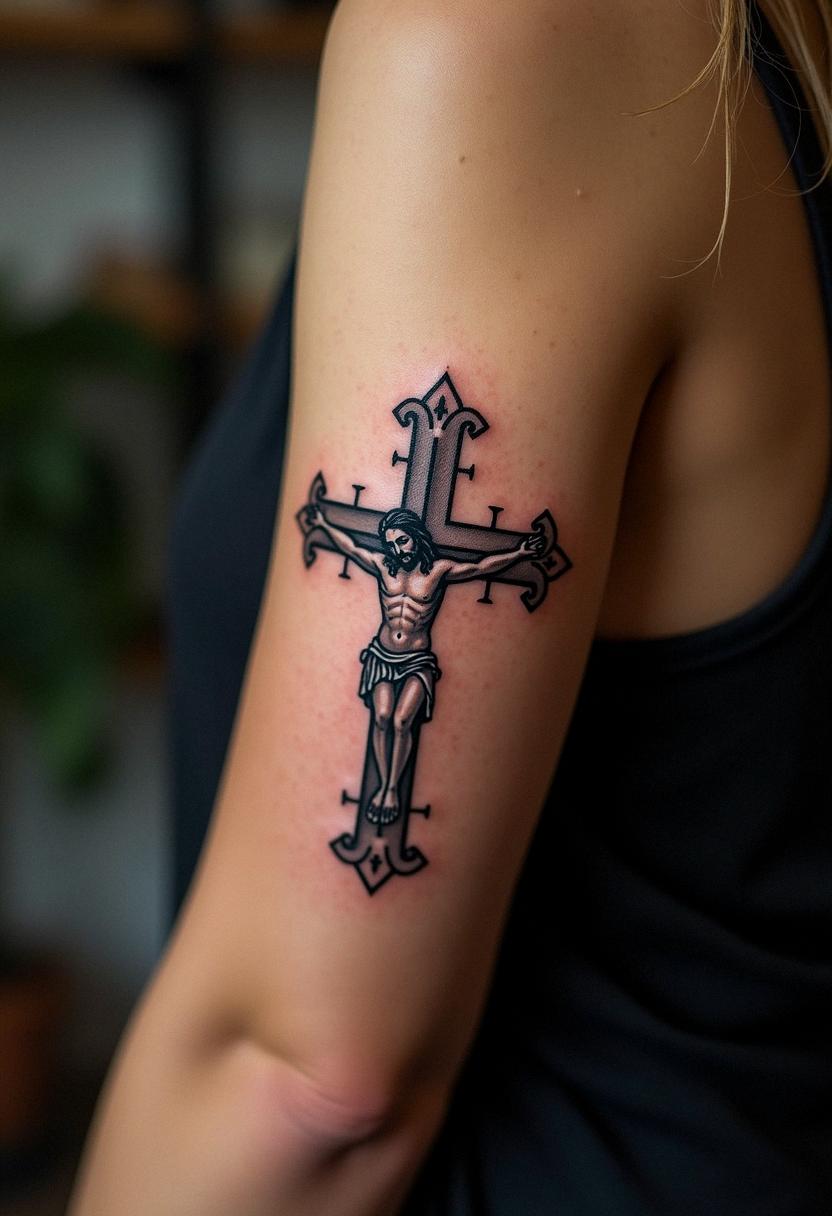
Embracing Identity, Faith, and Art Through the Jesus Cross Tattoo
Ultimately, a Jesus cross tattoo is more than just ink on skin—it’s an embodiment of identity, faith, and the artistic spirit that unites us all. As you stand before the mirror admiring your ink, you’re not simply reflecting on a design but also on the life experiences, challenges, and triumphs that have shaped who you are today. The tattoo becomes a daily reminder of a deep, enduring connection to something larger than yourself, allowing you to wear your beliefs as proudly as any fashion statement. You might feel empowered knowing that your tattoo speaks volumes about your journey, encapsulating your inner struggles and the victories you’ve earned along the way. In a society that is often fast-paced and transient, the Jesus cross tattoo stands as a humble yet potent declaration of personal commitment, resilience, and spirituality. It sparkles as a conversation starter, a piece of art that not only adorns the body but also tells the remarkable tale of your life. Embracing this ink means cherishing a symbol that is as timeless as it is modern, and as personal as it is profound.
